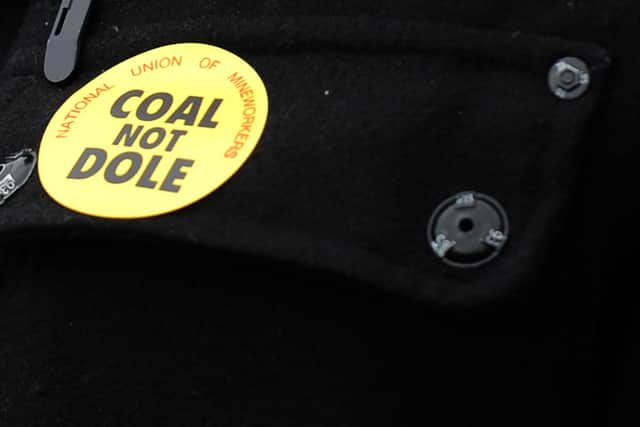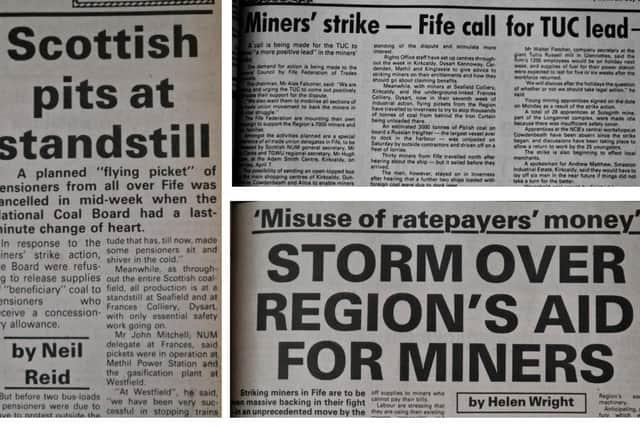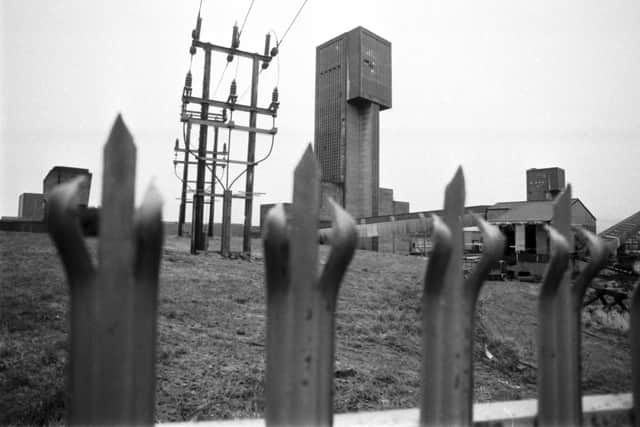Miners’ strike 40 years on: picket lines and soup kitchens in Fife and a year of hardship
and live on Freeview channel 276
It was a defining moment in the lives of many families who endured a year on the picket lines, supported by strike centres and soup kitchens. There hasn’t been an industrial dispute like it since, and there never will be.
The events of 1984-85 defined much of the Thatcher Government and her dismantling of the coal industry. Today in Kirkcaldy you’d never know there was even a colliery. The land at Seafield is now an upmarket housing estate, and the town’s only acknowledgement of the men who toiled under the Forth is the smallest of plaques on the side of a playpark in Bowhouse Drive. Gone and, to a generation or more, also forgotten.
Advertisement
Hide AdAdvertisement
Hide AdBut, to turn back the pages of the Fife Free Press in March 1984 is to step into a dispute that was tougher, and longer, than any other - one that brought real hardship, tested families, and left its scars on communities. Arthur Scargill, president of the National Union of Mineworkers (NUM) called a national strike on March 12. Miners in Fife were already out by then as two separate disputes at Seafield and its interlinked Frances Collieries rumbled on.


At its peak, coalmining in Scotland employed 150,000 men in 500 pits across the country. The decline started in the 1960s and 1970s, and what little remained of the once proud industry was was earmarked for wipe out as Ian MacGregor, Thatcher’s personal appointee as head of the National Coal Board - ‘Mac The Knife’ - announced plans to close 20 coal mines. He believed much of British industry was hopelessly uncompetitive and was of the opinion that mines where costs were too high had to close. He announced that Cortonwood Colliery in Yorkshire would be the first pit to shut. When the coal board announced that another five were to go, the fuse was lit.
Ten strike centres were set up in Fife as miners dug in for the long haul. Production halted at Seafield, while at Frances only essential safety work went ahead as the first pickets headed to Methil Power Station and the gasification plant at Westfield. Tullis Russell papermill in Leslie was also on their radar and they successfully turned away a number of lorries a well as stopping trains carrying supplies of coal.
As well as solidarity, miners needed support, and it came via Fife Regional Council as Labour councillors instigated unprecedented help from free school meals for children, to interest free loans for families facing hardship, and free use of leisure and sports facilities. Extra staff were also taken on to speed up housing benefit claims, while pressure was put on the Electricity Board not to cut off supplies to families behind with their bills.
Advertisement
Hide AdAdvertisement
Hide AdTory councillors branded it a “total misuse of ratepayers money.”


Bert Gough, council convener and a former miner, was having none of it: “I have no apology to make if anyone has criticism of the action taken by this administration. What we are trying to do is to ensure to the best of our ability that the hardship to families is minimised and that no youngster in Fifer suffers.”
Henry McLeish, then leader of the Labour administration, was straight to the point: “This unprecedented package of support is for the families. We are not willing to see any Fife family return to the conditions which existed in this country in the 1930s.”
By week six there was support as railway and transport unions vowed not to cross pocket lines, and Fife miners found themselves dispatched from strike centres to join picket lines in Midlothian and even down south - five cars heading to Nottingham stopped to ask police for directions and were promptly turned around and told “get back to Scotland!”
Advertisement
Hide AdAdvertisement
Hide AdThe first major rally was held in Pittencrieff Park in Dunfermline, addressed by Mick McGahey, Scottish NUM leader, while a special conference for delegates went ahead at the Adam Smith Theatre in Kirkcaldy.


There was talk of taking open-topped buses into town centres such as Kirkcaldy, Dunfermline and Cowdenbeath to lead the fundraising efforts, and landlords of empty shops were urged to open them up so miners could have bases to get their message across to the public whose support was crucial. By the end of the first month of the strikes, coal merchants reported supplies were running low, while Tory councillors walked out of a meeting of a debate on extending free school meals. The fault line between the parties was evident - Labour councillors all wore ‘fight pit closure’ stickers.
The dispute was just one month old. There were 11 more to go. The hardship for many had yet to bite deeply.
The Fife Free Press actually dropped the strike from its front page by mid-April, which seems extraordinary given the impact on the local community and economy. An editorial column indicated its stance, noting the 1974 strike which brought down the Heath Government had “helped to usher in the age of inflation from which we are just recovering.”
Advertisement
Hide AdAdvertisement
Hide AdThe Press said “a destructive all out fight does not make sense” and urged the NUM to take on the Government to secure a modernised, efficient industry worthy of public investment. “The unions should fight for this rather than try to prop up the past.” Six weeks in, and the battle lines were clearly being drawn …
> The Press plans to share the story of the strike through the eyes of people who lived trough it. If you would like to take part please email [email protected]